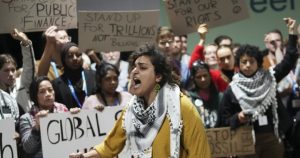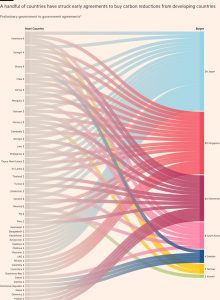Diversity concerns cast a shadow over the science Nobels
Stay informed with free updates
Simply sign up to the Science myFT Digest — delivered directly to your inbox.
The writer is a science commentator
When Pierre Curie learnt he was about to share the Nobel Prize for physics with Henri Becquerel for their separate investigations into radioactivity, he insisted that his own laboratory partner not be overlooked. After protesting, his wife Marie Curie was added to the ticket and all three shared the 1903 award.
More than a century later, questions about fairness, diversity and representation still hang over the world’s most prestigious science prizes. The seven 2024 science laureates announced last week are all men from North America and Europe. The prize committee posted congratulations to one science laureate by citing a groundbreaking 1993 paper on which his wife was first author, attracting speculation she had been snubbed.
A breakdown of statistics published by the journal Nature shows that new laureates frequently operate in the orbit of older ones, and that social networks matter. In that light, the homogeneity of winners begins to make sense. The journal rightly describes the prizes as “globally unrepresentative”. They certainly challenge the perception of science as a truly global, wholly merit-driven enterprise.
The announcements raised eyebrows for other reasons. Both the physics and chemistry gongs went to superstars of artificial intelligence research, including ex-Google scientist Geoffrey Hinton and Google DeepMind’s Sir Demis Hassabis, each boasting polymath backgrounds that blend computer science, psychology and neuroscience (interestingly, Hinton and Hassabis have links to the same University College London research unit).
Few begrudge the accolades: Hinton’s work was pivotal in building AI; Google DeepMind’s AlphaFold2, an AI programme that predicts the structure of proteins, is transforming biology. The company also scooped a top engineering prize this year for its weather-forecasting technology. Still, in the age of AI and amid interdisciplinary challenges like climate change, we might wonder whether current Nobel categories are relevant today.
Nature crunched the numbers on the 346 Nobels given to 646 laureates across the three science categories (physics, chemistry, and physiology or medicine) since 1901. Each prize, worth just over $1mn, can be shared by up to three people.
In the 20th century, 11 science Nobels were awarded to women; since 2000, there have been 15. This year? None. “It does not surprise me . . . but it disappoints me,” the Oxford university astrophysicist Dame Jocelyn Bell Burnell tells me. She is widely regarded as having lost out on a 1974 Nobel for the discovery of pulsars in favour of two senior men, one her PhD supervisor. In 2018 Bell Burnell won a $3mn Breakthrough Prize — a newer rival to the Nobels co-founded by tech billionaires including Mark Zuckerberg — and used the cash to start a scholarship fund for physicists from under-represented backgrounds.
More than half of the science Nobels, meanwhile, have gone to North America. Frances Arnold, a Caltech professor and a 2018 Nobel Prize-winner for chemistry, told me on Monday that she too “would have loved to see female winners as well as more geographical diversity” but added that the talent pool is widening and that change is surely coming.
Laureates tend to beget laureates. JJ Thomson, a 1906 physics winner, trained nine more physics laureates plus two in chemistry. US scientists Victor Ambros and Gary Ruvkun, who shared the physiology or medicine prize this year, both trained under Robert Horvitz, a 2002 laureate; Ambros’s doctoral supervisor was 1975 winner David Baltimore.
The inbreeding in the Nobel family tree partly reflects the funding, power and prestige of some institutions — but also the tightly controlled nomination process. The only people able to submit names are previous laureates; members of the Royal Swedish Academy of Sciences; and professors at a handful of renowned universities. Others need an official letter of permission to nominate. Scientists cannot self-nominate, and all submissions stay secret for 50 years.
The prize committees are trying to identify more women, young people and scientists beyond US and Europe as nominators. The African Academy of Sciences and the World Academy of Sciences have offered help. The latter, set up in 1983 by the late Pakistani physics laureate Abdus Salam, numbers 1,400 scientists in lower- and middle-income countries.
Especially in an age of collaborative science, the Nobel Prizes remain the ultimate global symbols of individual achievement. It is only right that selection committees go above and beyond in unearthing the full breadth of scientists who deserve them.
#Diversity #concerns #cast #shadow #science #Nobels




